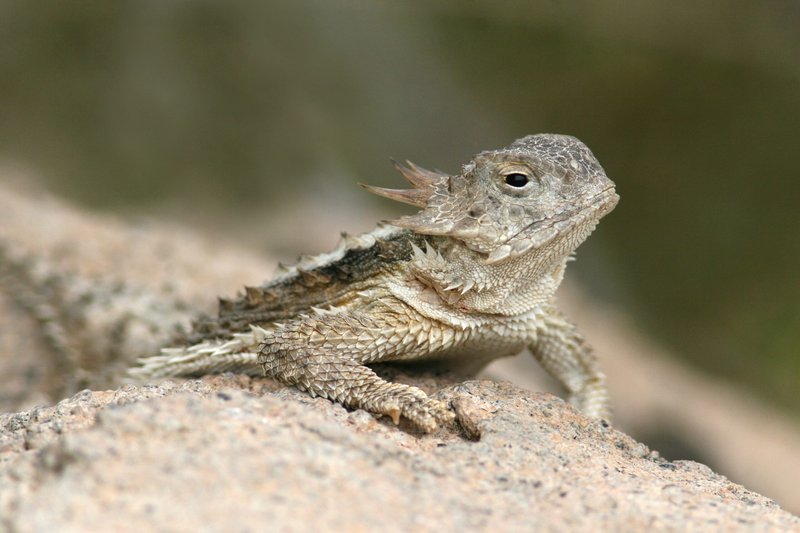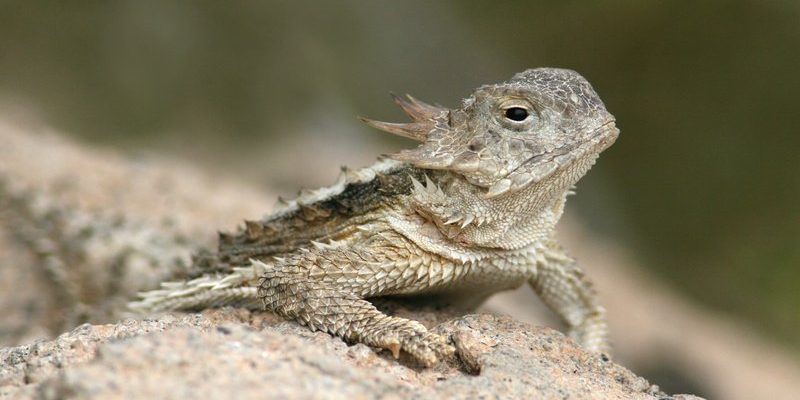
Think of a horned lizard as a tiny dinosaur living right in your own backyard. They come in various shapes and colors, but common traits are their horn-like projections and their ability to blend in with the landscape, making them quite the expert in camouflage. If you come across one in the wild, it’s a chance to learn about one of nature’s little wonders. But remember, while they might look tough, these creatures need our respect and care.
Identifying a Horned Lizard
Knowing what you’re looking at is important. Horned lizards can be tricky to identify if you’re not familiar with their features. Typically, they have a flat, rounded body with prominent spikes along their back, which gives them a prehistoric look. The color can range from brown to gray, allowing them to blend in with their surroundings—like a natural camouflage that works wonders in the wild.
Most species do have distinct characteristics. For example, the *Texas horned lizard* has a prominent pair of horns above its eyes that set it apart from others. Their bodies are also covered in rough scales, helping them to stay hidden from predators. The key thing to remember is their shape and armor-like appearance. This helps them thrive in the arid environments they prefer.
When you see one, take a moment to appreciate its unique beauty and how well it fits in with its surroundings. You might even notice it puffing itself up or changing colors slightly if it feels threatened—an interesting defense mechanism!
What to Do When You Spot One
First of all, stay calm. Horned lizards are not aggressive by nature, and they’re more interested in avoiding confrontation than causing trouble. If you spot one, the best approach is to observe quietly from a distance. Getting too close too quickly can startle the lizard and scare it away.
Here are some steps to take:
- Keep your distance: Try to stay at least 10-15 feet away. This helps prevent stressing the lizard.
- Observe patiently: Take your time watching how it moves, what it does, and how it interacts with its environment.
- Use your camera: If you want a closer look, try taking photos instead of approaching. This way, you capture the moment without impacting its natural behavior.
Respecting wildlife means letting them be themselves. Interacting with them in a non-disruptive way helps ensure they continue to thrive in their natural habitat.
Handling a Horned Lizard: Is It Safe?
You might be wondering if it’s okay to handle a horned lizard. The answer is not straightforward. While it’s often safe to touch them, it’s best avoided unless absolutely necessary. Horned lizards are delicate creatures, and picking them up can cause them stress.
If you find a horned lizard in a precarious situation (like being in the middle of a road), you can help. Here’s how to do it gently:
- Approach slowly: Move quietly and deliberately to avoid alarming it.
- Gently scoop: Use both hands to gently scoop it up from underneath—never grab it by the tail as it can break.
- Relocate carefully: Place it in a safe spot, away from dangers like roads or predators.
Remember that even good intentions can stress these little guys. If you don’t need to move it, it’s best to give it space.
Understanding Their Role in the Ecosystem
Horned lizards play an important role in their ecosystem, often controlling insect populations. They primarily feed on ants, beetles, and other small insects, so their presence can help maintain balance in their habitats. When you see one, you’re not just observing a creature; you’re witnessing a tiny piece of a larger puzzle that keeps our environment healthy.
By helping to control insect populations, horned lizards contribute to the health of the landscape. Their feeding habits ensure that certain insects don’t overwhelm the ecosystem, enabling plants and other animals to thrive. The next time you see one, think about its role and how it interacts with the world around it.
Conservation and Protection of Horned Lizards
Sadly, horned lizards face challenges from habitat loss, climate change, and predation. Many species are declining in numbers, so understanding how to protect them is essential. Knowing how to behave around them can help reduce stress and ensure they continue to thrive.
Here’s how you can contribute:
- Educate others: Share your knowledge about horned lizards with friends and family, promoting awareness and respect for wildlife.
- Support conservation efforts: Organizations dedicated to protecting wildlife often seek volunteers and donations.
- Respect their habitat: When you’re in their territory, stick to trails and avoid disturbing their environment.
By being mindful of your actions, you help protect these amazing creatures for future generations.
Encountering a horned lizard can be an exciting experience. Remember, these little reptiles are more than just cool-looking creatures; they are crucial members of our ecosystems. Whether you’re observing them from a distance or gently helping one out of harm’s way, the key is to respect their space and understand their role.
Next time you find yourself in the wild, keep an eye out for horned lizards. You’ll not only get to appreciate a unique part of nature, but you’ll also contribute to its protection. Every small action counts when it comes to preserving our environment and the incredible wildlife that inhabits it.

